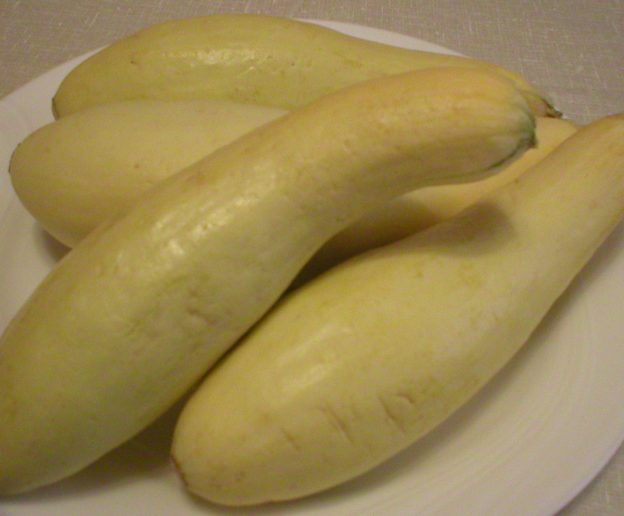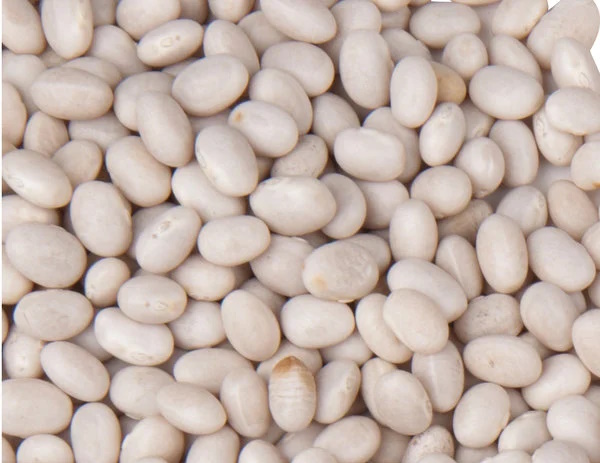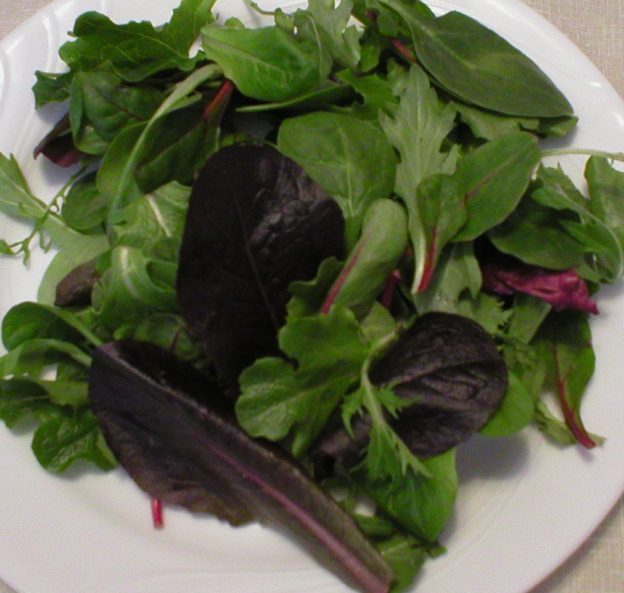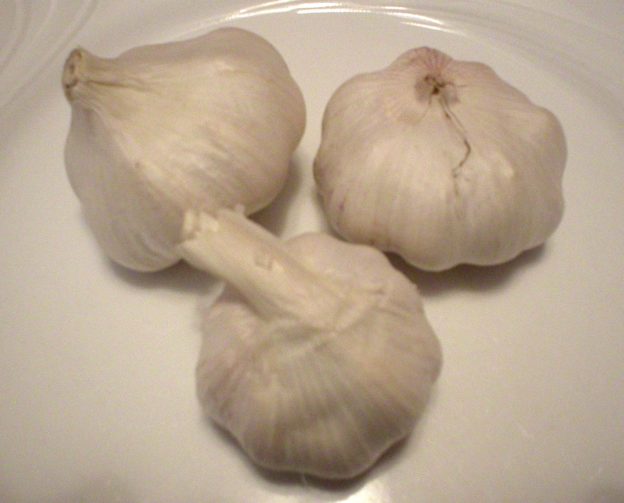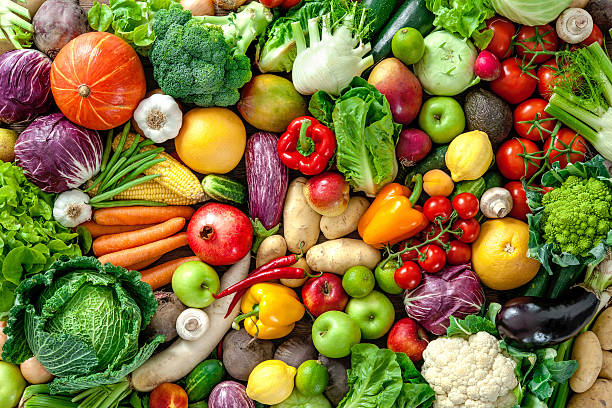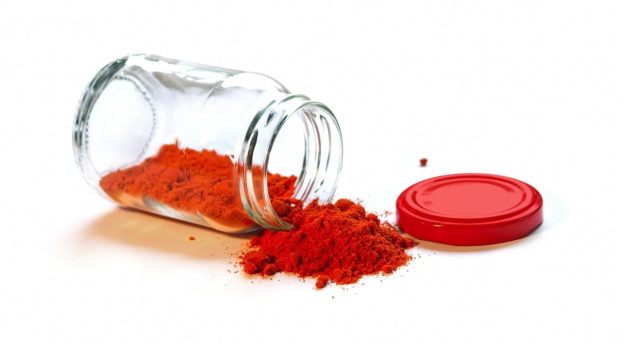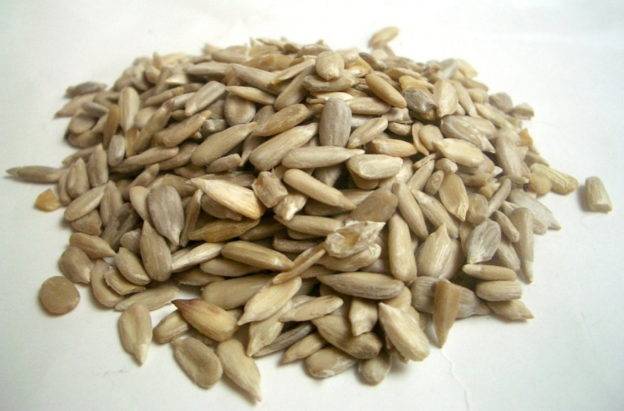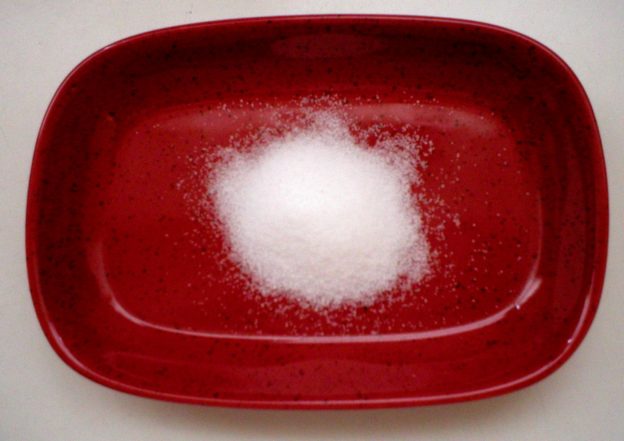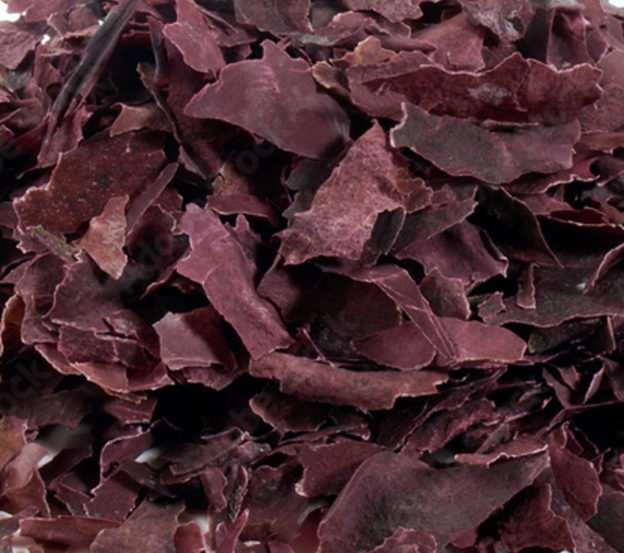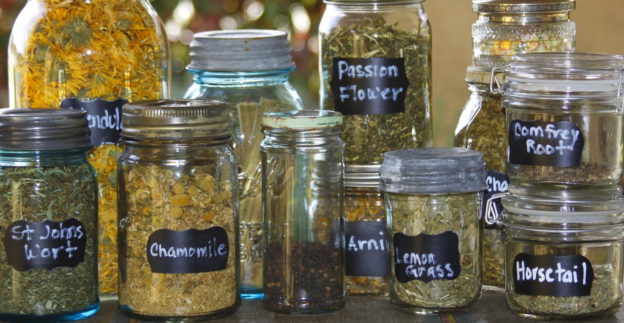Food Safety 101
Food Safety is Important for Everyone. Prevention is key!
Foodborne illness, also referred to as foodborne infections, foodborne disease, or food poisoning can affect absolutely anyone. Researchers have identified over 250 foodborne diseases, with most of them being caused by viruses, bacteria, or parasites. Foodborne illness can also occur from contamination of chemicals or other toxins in food.
Foodborne illness affects as many as 1 in 6 Americans annually. The Centers for Disease Control (CDC) estimates that each year 48 million people get foodborne infections, with 128,000 being hospitalized, and 3,000 dying as a result of their illness. The effects can range anywhere from mild digestive distress to death, and many problems in between. It can result in very serious consequences, so foodborne illness should not be taken lightly. Knowing how to avoid foodborne illness, recognizing the symptoms, and knowing what to do if you do encounter such illness can literally be life-saving. It’s something we should all be aware of, with knowing how to ward off any potential problems cannot be underestimated.
High Risk Populations. Some individuals are more prone to developing foodborne illness, and if they do get sick, their health risks become increased. This includes people with a weakened immune system, such as those undergoing cancer treatment, those who have certain illnesses such as diabetes, liver or kidney disease, those who have had organ transplants, or HIV/AIDS, or are taking certain medications, children under the age of 5, adults 65 years of age and older, and pregnant women.
Some Pathogens That Cause Foodborne Illness
The most common pathogens that cause foodborne illness in the United States are:
* Norovirus. Norovirus is the most common foodborne illness, and it is a very contagious virus. It can arise from consuming food or beverages infected with the virus. However, it can also be spread from person to person, especially when someone is caring for the infected person. Symptoms of norovirus include vomiting, diarrhea, abdominal cramps, and mild fever.
* Salmonella. Salmonella are bacteria live in the intestines of mammals. People usually come in contact with it by eating food that was contaminated by animal feces. Symptoms of a salmonella infection include vomiting, diarrhea and abdominal cramps.
* Clostridium perfringens. The CDC estimates that this bacterium causes almost 1 million foodborne illnesses in the United States every year. The bacterium produces spores in their inactive forms that can survive heat, dryness, and other environmental conditions. The bacteria become active and multiply when food is kept at an unsafe temperature (between 40-140°F) for an extended period of time. When someone eats the food, C. perfringens produces a toxin that causes diarrhea. Foods typically linked with this type of foodborne illness include poultry (such as turkey and chicken), meats (such as beef and pork), and gravy. Outbreaks of this type of infection tend to happen where large numbers of people are served and keeping food at the proper temperatures is difficult. Such settings include hospitals and school cafeterias, prisons, nursing homes, and large events serving catered food. Most of such outbreaks happen in November and December with many being linked to common holiday foods such as turkey and roast beef.
* Campylobacter. This bacterium causes about 1.5 million illnesses annually in the United States. The infection can happen when people eat raw or undercooked poultry, or something that touched it. It can also be transmitted by eating other foods, including infected seafood, meat, and produce, by having contact with animals, and by drinking untreated water. People usually recover without treatment, but some need antibiotics. Symptoms include diarrhea (often bloody), fever, and stomach cramps. Nausea and vomiting may occur along with the diarrhea. Symptoms often start 2 to 5 days after ingesting the tainted food, and can last about one week. Sometimes complications such as irritable bowel syndrome, temporary paralysis, and arthritis can occur. In those with a weakened immune system, Campylobacter infection can spread to the bloodstream causing a life-threatening infection.
* Staphylococcus aureus (Staph). Food poisoning caused by Staph is a gastrointestinal illness caused by eating foods contaminated with toxins produced by the bacterium. The illness is characterized by a sudden onset of nausea, vomiting, and stomach cramps. Most of those infected will have diarrhea. Symptoms occur quickly, usually within 30 minutes to 8 hours after consuming the item with the Staph toxin. Symptoms last no longer than one day, and severe illness is rare. The illness cannot be passed from one person to another.
About 25% of people and animals have Staph on their skin and in their nose. It usually does not cause illness in healthy people, but Staph makes toxins that can cause food poisoning. Food contaminated with the toxin may not smell bad or look spoiled. Foods that are not cooked after handling are particularly at risk of being contaminated with Staph. Such foods include sliced meats, puddings, pastries, and sandwiches. People who carry Staph on their skin can contaminate food if they don’t wash their hands before working with food. The bacteria themselves are killed by cooking, however, the toxins are not destroyed by the heat and will still be able to cause illness.
Some other pathogens that don’t infect as many people as the most common ones, but their illnesses are more likely to lead to hospitalization include:
* Clostridium botulinum (Botulism). Botulism is a rare, but very serious disease caused by a toxin produced by this bacterium (and also some closely related other types of Clostridium bacteria). The toxin attacks the body’s nervous system, causing difficulty breathing, muscle paralysis, and even death. The toxin can be produced in food, wounds, and even the intestines of infants. Interestingly, the bacteria that make the toxin are found naturally in many places and it is rare for them to make people sick. The bacteria produce spores that help the bacteria survive in the environment. The spores usually do not cause sickness. However, under certain conditions, the spores can grow and make a potent lethal toxin. The conditions that allow the spores to grow and produce toxins include: low or no oxygen (anaerobic) environment, low acid, low sugar, low salt, a specific temperature range, and a certain amount of water. Improperly home-canned, preserved, or fermented foods can provide the right conditions for this to happen. When the foods are eaten, people can become seriously sick, or even die if they don’t get medical attention quickly.
Symptoms of botulism usually start with weakness of the muscles that control the eyes, face, mouth, and throat. The weakness may spread to the neck, arms, torso, and legs. Botulism may also weaken the muscles involved in breathing, which can lead to breathing difficulty and possible death.
* Listeria. Listeriosis is not very common in the United States, but it is the leading cause of death among those infected with foodborne illnesses. It is caused by eating food contaminated with Listeria monocytogenes. About 1,600 people get listeriosis each year, with about 260 dying. Mild cases cause gastrointestinal distress, which resolves on its own. However, the bacteria can become invasive in the body, making its way into the blood and even brain. When this happens, it can cause meningitis, miscarriage, and other fatalities. The bacterium is most likely to cause illness in pregnant women and their newborns, adults aged 65 and older, and people with weakened immune systems.
Listeria can hide in many foods. In the 1990s, infections were mostly linked to deli meats and hot dogs. Currently, Listeria outbreaks are often linked to dairy products and produce. Recent outbreaks have been traced to soft cheese, celery, sprouts, cantaloupe, and ice cream.
* Escherichia coli (E. coli). Many strains of E. coli are harmless. However, certain strains that can enter the body from contaminated food or water can cause diarrhea, urinary tract infections, respiratory illness, and other illnesses.
* Vibrio. Vibriosis causes about 80,000 infections with 100 deaths in the United States annually. People become infected by eating raw or undercooked seafood, or exposing a wound to seawater. Most infections happen from May through October when water temperatures are warmer.
Vibrio can cause watery diarrhea often accompanied by abdominal cramping, nausea, vomiting, fever, and chills. The symptoms often occur within 24 hours of ingesting the tainted food, and last about three days. Severe illness is uncommon, and usually occurs in people with a weakened immune system.
The bacteria can cause a skin infection when an open wound is exposed to salt water or brackish water, which is a mixture of fresh and salt water, often found where rivers meet the sea.
Symptoms of Food Poisoning
Most people with a foodborne illness recover without medical treatment. However, those with severe symptoms should seek medical attention as soon as possible.
Some common symptoms of foodborne diseases are:
* Nausea
* Vomiting
* Stomach cramps
* Diarrhea
It’s important to note that symptoms may differ from person to person, and may also depend on which pathogen or toxin contaminated the food. Sometimes, symptoms can be very severe, even life-threatening.
Common Food Safety Mistakes
No one intentionally does something to cause foodborne illness among their family and friends. However, some innocent mistakes can cause serious illness when handling food, especially raw meat, fish and poultry. Being aware of simple mistakes that can easily happen can help to prevent serious illness. The following are some common food safety mishaps that can happen when a person is not thinking about food safety.
* Leaving raw meat out of the refrigerator for an extended amount of time. This allows harmful bacteria to breed and can possibly make someone very, very sick. Such a thing can happen when someone is preparing the grill. It’s best to leave the raw animal foods covered and in the refrigerator until everything is ready for cooking or grilling.
* Leaving cooked or raw food uncovered or unrefrigerated beyond safe times, especially when eating outside. This exposes food to insects, debris, viruses, and bacteria, in addition to the food being kept in the temperature danger zone (40°F to 140°F) too long. When left within the danger zone range too long, harmful bacteria can flourish potentially making the food dangerous to eat. Keeping food covered, while keeping hot food hot and cold food cold can go a long way in avoiding foodborne illness. Always put extra food away as soon as possible after serving.
* Not putting leftover foods away in a timely manner. Leftover food should be refrigerated within two hours of being cooked, when dining inside. Note that this is two hours from the time something is cooked, not two hours from when you’re finished eating. This includes take-out foods or leftover foods from dining out that you elect to take home with you. When eating outside on a hot day, the food should be refrigerated within one hour of being cooked. Foods left out for prolonged times may easily allow the growth of potentially harmful bacteria to grow within. Anyone who eats that food later in the day or in the next day or two could possibly become very sick.
* Not properly sanitizing and disinfecting food preparation surfaces and tools. This can accidentally spread unsafe food juices and/or particles on counters, knifes, cutting boards, plates, tongs, and other surfaces or tools used for food preparation and serving.
* Using the same food preparation tools and surfaces for all foods. This can create an environment where bacteria and viruses are not contained to specific areas and are more likely to spread. This is especially true when handling raw, then cooked animal foods along with fresh produce that will be served raw.
* Sitting food out in the sun. This warms the food, increasing the rate at which pathogens can multiply and reduces the time frame for safe food consumption. Being mindful of temperature regulation and the environment prepared food is exposed to, especially when dining outside can go a long way in preventing foodborne illness.
The Importance of Cleanliness
Personal Hygiene
Wash hands and surfaces often! Germs that can cause foodborne illness can live on your skin. Because of that, it’s very important to wash hands often. This is especially important after using the restroom, blowing your nose, touching or scratching a wound, covering your mouth with your hand when you sneeze or cough, working around others who are sick, changing diapers or assisting a child in the bathroom, handling chemicals, brushing your hair, handling money, handling or petting an animal, handling raw meat, seafood, or poultry, chewing tobacco or smoking, eating, using electronic devices, taking out the trash, handling dirty items (no matter what they are), and touching anything that may contaminate your work area or food.
To thoroughly wash your hands, use warm water and soap, and scrub all areas for at least 20 seconds. Rinse hands well and dry with a clean cloth or fresh paper towel.
Utensils and Equipment
Food preparation and serving equipment and utensils should routinely be washed with hot, soapy water (or washed in a dishwasher) after each use. This includes dishes, glassware, pots and pans, cutting boards, preparation knives and serving utensils, reusable straws, lunchboxes, water bottles, and plastic food containers.
Sanitation on a regular basis can be important for preventing foodborne illness, especially if you prepare raw meats, seafood, and/or poultry. Utensils may be placed in a pot of boiling water for 5 minutes. Remove them with tongs and allow them to cool before being stored.
To sanitize cutting boards, larger equipment, or items that cannot be boiled, prepare a sanitizing solution of one tablespoon of bleach in one gallon of water. Allow items to soak at least 2 minutes, or up to 5 minutes. Remove them from the solution and allow them to air dry. There is no need to rinse them after being sanitized, unless a stronger bleach solution is used. In that case, rinsing with potable water is necessary. Prepare your sanitizing solution fresh, as needed, because it will not keep beyond 24 hours. It is very important to note that bleaches that contain thickening agents, fragrances, or other additives are not considered to be “food grade” and should not be used on food, plates, utensils, or other equipment that will come in contact with food.
When cleaning sinks and all equipment that will be used in food preparation, it’s important to remember that any disinfectants or cleaning agents used in their cleaning (other than the weak sanitizing bleach solution detailed above) must be rinsed very well so all traces of such chemicals are removed after being cleaned. Residues left from such chemicals can be transferred to food during preparation, potentially causing foodborne illness in those who eat the food.
Surfaces
To sanitize kitchen surfaces such as countertops, work tables, refrigerator shelves and door handles, and oven door handles, prepare a bleach solution of 1/3 cup of bleach to 1 gallon of water (4 teaspoons of bleach per quart of water). Wipe the solution on the surface to be sanitized and allow it to sit for at least one minute before wiping it off with a clean cloth or paper towel.
Important! Do not use bleach on marble, non-stainless steel, aluminum, silver, or chipped enamel. Also, NEVER mix bleach with any other chemicals. Only mix it with water. Be sure to wear gloves, use cloths or sponges that you don’t mind getting bleach on. Wear clothing that would be safe to wear around bleach in case some splashes on you. Make sure you have good ventilation when using bleach products.
Separate to Prevent Cross-Contamination
Biological Contamination. For food safety, it is critically important to keep raw animal products that will be cooked (like raw meat, fish, poultry, and eggs) away from fresh produce or other foods that will be eaten raw. Raw animal products may be contaminated with harmful bacteria that can make us very sick if ingested, even in tiny amounts. Such foods should be kept separate when shopping, bagging, storing, preparing, or working with these foods in any way imaginable.
Using color coded cutting boards and utensils is helpful in preventing biological cross-contamination. Designating a specific color of cutting board to always be used when cutting raw animal foods and another specific color to always be used when preparing raw produce is extremely helpful in preventing such cross-contamination. Washing and also sanitizing your cutting boards and utensils after each use can be extremely helpful in preventing such contamination. Also, never place cooked food back on the same plate or cutting board that previously held raw food, especially raw animal foods. If you must use that same place, wash it in hot soapy water first, and preferably, also treat it with a sanitizing solution before reusing it. Do not reuse a cutting board in this way because some are porous and you may not remove all potential pathogens that are on it.
Also, be sure to also sanitize kitchen counters and work areas after cutting or handling raw animal foods. Even a small amount of raw meat juice splashed on a kitchen counter can be enough to contaminate food that will be consumed raw if it comes in contact with that area. It’s important to be mindful of keeping your work areas and all tools that were used sanitized after working with any raw animal foods and before doing anything else, to prevent possibly harmful cross-contamination.
Chemical Contamination. Chemical contamination happens when food come in contact with chemicals or factors that are not intended to be ingested. The most common causes of such contamination include cleaning products in the food storage or preparation area, and pesticides and herbicides from unwashed fruit and vegetables.
Products such as detergents, sanitizers, and other chemicals you may have in your kitchen are potential contaminants if they come in contact with your food. Such items should always be stored well away from food and food preparation areas. They should be stored in their original labelled containers. Make a point of never storing food in any container that was used for storing chemicals because any residue on the container could possibly leach onto the food. When using chemicals in your food storage and preparation area, always remember to rinse well after cleaning and sanitizing.
When preparing fresh fruits and vegetables, always rinse them well before peeling, cutting, or preparing them in any way. This includes thick-skinned produce that will be peeled and the peel discarded, such as a melon. If a melon is not washed before being cut, any soil, microorganisms, or chemical residues that linger on the outside of the peel can be carried inward to the edible flesh when you cut into it with a knife. This could lead to possible foodborne illness, depending upon what was on the surface. Washing before cutting is critical to preventing such a mishap.
If you are reactive to chemical residues on fresh produce such as apples, and want to remove more residue than simple rinsing with water can do, there is a way to remove most of what was left on the food. Make enough of a solution of 2 cups water to 1 teaspoon of baking soda to completely submerge the food. Place the food in the solution, weighing it down if needed (because some items such as apples will float). Allow the food to soak in the solution for up to 15 minutes. Remove the food from the soaking solution, rinse, then dry well and store them as usual. Wash and rinse your soaking container well to remove any residue. This tactic has been proven scientifically and works well for removing chemical residues from foods. Here is a link to a video I released on this technique… https://youtu.be/AsUAD6EWyzw
Physical Contamination. Raw meat, poultry, and fish may be contaminated with harmful bacteria. Such foods should always be kept separate from other foods, especially those that are already prepared or will be eaten fresh. In the refrigerator, fresh foods or those foods that have already been prepared should be stored on shelves above shelves where any raw animal foods are being kept. The raw animal foods should be kept tightly wrapped to help prevent any fluids from leaking out of their packaging. This protects your fresh or prepared food from possibly being contaminated with any drippings from the raw animal foods. If any leaking does occur, be sure to thoroughly clean and sanitize the refrigerator shelf before placing any other items in that area.
Also, it is important to be mindful of keeping designated cutting boards and utensils for use with raw animal foods and raw produce items. Using color-coded utensils and cutting boards designated for such items is an excellent way to prevent cross-contamination and cross-contact of possible bacteria in your kitchen. Designate a specific color, such as green, for use with fresh fruits and vegetables. Another color, such as red or orange can be designated only to be used when cutting raw meats, fish, and poultry.
Common Allergens. If someone you prepare food for is reactive to any specific food, then extra care should be taken to avoid cross-contact of that food with other foods when preparing any meal. Using color-coded utensils and cutting boards would be helpful in making sure there is no cross-contamination. Also, use care in keeping the allergen away from other foods in storage, or at least wrap it well, so there is no chance it will spread (in the pantry, refrigerator, and freezer) in any way onto other foods nearby.
Some highly sensitive people may even react to the aroma of a specific food. If you have someone you prepare food for who is extremely reactive to something, it may be best not to have that food in the home at all. It’s far better to be safe than sorry!
About Washing Food
Fruits and Vegetables. Fresh produce usually should not be washed until you are ready to use it. When in doubt, check the food label or packaging that it came in. Foods with an inedible peel, such as melons, citrus fruits, and avocados still should be washed before being cut. This is because any soil or germs on the outside of the peel can be carried into the edible flesh with a knife as it pierces the skin. To prevent this, always wash all fruits and vegetables before using them, even if they will be peeled first. The US Food and Drug Administration suggests we use a vegetable brush to scrub firm produce, such as a cucumber.
Meats, Poultry, Fish. The flesh of meats, poultry, and fish should not be washed before being cooked. If there are bacteria on the surface of such foods, washing them first can spread the bacteria onto clean surfaces in your kitchen, greatly increasing the risk of foodborne illness. For instance, if contaminated poultry is rinsed in a sink, the sink will then harbor the bacteria. If any of the rinsing water splashed on the faucet handles or countertop, you greatly increase the risk of spreading the bacteria on other foods, equipment, kitchen cloths, and/or utensils from being in contact with the splashed water. The only way to prevent this is to never rinse such foods. The only way to kill bacteria that are on fresh animal foods is to cook them to the proper internal temperature.
Food Safety When Cooking
When cooking, it is important to heat foods to the proper minimum internal temperature to be sure any bacteria in or on the food is destroyed. A food thermometer is essential for this task. See the next section to find the proper cooking temperature for the food you are cooking. Remember that those temperatures listed are minimum temperatures for safe cooking. Bringing foods to higher temperatures is perfectly fine and a matter of personal preference.
When you are finished cooking and need to hold the food for a little while before serving, it is important to keep it out of the temperature danger zone of between 40°F (5°C) and 140°F (60°C). Bacteria grows very rapidly when held between 70°F (21°C) and 125°F (52°C). If food is held within this temperature range for 2 hours or longer, it may not be safe to eat. To keep hot foods hot, they can be placed in an oven set on its lowest temperature, which should be above the maximum temperature of the danger zone. To keep cold foods cold, place them in the refrigerator or in an ice chest where they can be covered with ice. Of course, if they are frozen foods such as ice cream or sorbet, hold them in the freezer until needed. If they are frozen foods that were softened, they can be held in the refrigerator. But be aware that they will continue to thaw or soften if they were previously frozen.
Minimum Internal Cooking Temperatures for Food Safety
The only way to kill all bacteria in foods, especially raw meat is to cook it to the proper minimum internal temperature. A food thermometer is essential for ensuring your food has heated internally to the appropriate temperature. The chart below lists these temperatures:
* 145°F for whole beef, pork, lamb, veal, and uncooked fresh, smoked ham that was packaged in a USDA-inspected facility (and not previously opened)
* 145°F for fish and shellfish of any type
* 160°F for all ground meats
* 160°F for eggs
* 165°F for all chicken and poultry (whole or ground)
* 165°F for heating leftovers of any type (including cooked ham)
* 165°F for casseroles
Chilling Food
After a meal is finished, be sure to pack any leftovers in an appropriate container and store them in the refrigerator as soon as possible. To help prevent foodborne illness, all leftovers should be stored in an appropriate way (in the refrigerator or freezer) within two hours of being cooked. Note that this is not two hours after getting up from the dinner table. Being mindful of how long food has been sitting out and adhering to this rule can help to prevent serious illness in anyone who will consume the leftover foods later. This is important because the temperature of our homes falls within the temperature danger zone. Food should be kept within this range for as little time as possible.
If you are dining outside in the sun on a hot day, it is important to put food away within one hour of being cooked, not two. Under these conditions, food will be subjected to warmer temperatures (still within the danger zone) than if they were served indoors. The warmer temperatures outside will invite bacteria to proliferate even faster than indoors. Hence, we need to chill the food sooner when dining outside, to prevent possible foodborne illness later.
Temperature Danger Zone. The Danger Zone is the temperature range at which bacteria can readily grow and multiply. The range is between 40°F and 140°F (5-60°C), with the most vulnerable range being between 70°F (21°C) and 125°F (52°C). If a food is contaminated with harmful bacteria and left in the Danger Zone temperature range, the bacteria can grow potentially causing foodborne illness in those who consume the food, even if it has been cooked before being eaten. Keeping food out of this temperature range helps to prevent foodborne illness (by limiting the growth of bacteria in the food) in those who handle or consume the food. Food is safest when it is either frozen, chilled, or heated beyond the Danger Zone temperature range. The colder it is, the less likely for bacteria to grow and multiply.
Ideal Temperature for Your Refrigerator and Freezer. The ideal temperature range for a refrigerator should be above 32°F (0°C) and below 40°F (4°C). This keeps food out of the danger zone, deterring the growth of any bacteria that may be on the food.
Freezers should be kept at 0°F (-18°C) or below.
Thawing Food
Many of us keep food in the freezer for convenience and safe storage. The problem can come when we want to use the food and time is short. Some foods, such as frozen vegetables, can be prepared from a frozen state, while others, such as a frozen casserole, will cook better when thawed first. There are different ways that food can be safely thawed.
* Refrigerator. Thawing in the refrigerator is slow, but a food-safe method. It’s often convenient to transfer food from the freezer to the refrigerator before retiring for the night, when you need to cook it the next day. If you are thawing meat, poultry, or seafood, be sure to place it in a pan or plastic bag so any juices will not drip onto other foods in the refrigerator. Because of the potential risk of cross-contamination with thawing animal foods, it is best to place it on the bottom of the refrigerator so there is no chance of any liquid dripping on something below.
* Cold Water. Place frozen food into a leak-proof plastic bag or container for faster thawing than the refrigerator. Submerge the bagged food in cold tap water. Change the water every 30 minutes until it is thawed. Cook the food immediately after thawing.
* Microwave. Food may be thawed in the microwave. Follow the manufacturer’s directions for thawing food in your appliance. It is important to cook meat or poultry immediately after microwave thawing.
No matter which method works best for you in a specific scenario, it’s very important not to simply allow foods to thaw at room temperature. Doing so allows the outer surfaces of the food to be exposed to the Danger Zone (40-140°F or 5-60°C) temperature range. In this range, harmful bacteria can multiply and grow, possibly causing foodborne illness. It is best to avoid this and never allow foods to sit at room temperature for any length of time, whether it has been cooked or not. The general rule of thumb is to not allow any perishable food to sit at room temperature for 2 hours or more, even if it was frozen at the start. There is a risk of foodborne illness when eating such food, even if it is cooked after that time. It’s helpful to plan in advance when using frozen food. If it needs to be thawed first, choose the method that will work best for you, based on your circumstances.
Refreezing Thawed Foods
It is not safe to refreeze any plant-based food that has been out of the freezer and at room temperature for two hours or more. If it is a hot day, you do not have air conditioning, and the house is very warm (especially over 90°F or 32°C), it should not be refrozen if it has been at room temperature for one hour. If the frozen food is an animal-based food (meat, fish, poultry, milk-based, or eggs) or contains animal-based foods (such as a casserole or soup), it should not be refrozen if it has been at room temperature for one hour or more. If the house is very warm, then no animal food should be refrozen. It should be cooked or discarded.
Managing Leftovers
* Always practice the 2x2x4 Rule when dealing with leftover cooked food. This is a good rule to remember when storing leftover food of any type. In brief, here is what this means. The first 2 represents 2 hours. This means that all leftover foods should be refrigerated within 2 hours of being done cooking (NOT two hours after you are finished eating). The second 2 represents inches. When placing hot or warm leftover foods in the refrigerator, try not to have them over 2 inches thick. It takes a long time to chill such foods at the core. The thicker it is, the longer it will take to cool down. Limiting the thickness to no more than 2 inches will allow it to cool down faster, helping to avoid foodborne illness from that food. The last number represents 4 days. As a general rule of thumb, use leftovers within 4 days. Of course there are exceptions to this rule and you should let common sense be your guide. Here is a video I released explaining this guideline for handling and using leftover foods… https://youtu.be/iIMNN8J1AHc
* Be sure to discard any perishable food that was left out at room temperature for 2 hours or more. Discard any perishable food if it was left out for 1 hour or more when the temperature was above 90°F (32°C).
* If you enjoy a meal out at a restaurant and take any leftover food with you, place it in the refrigerator immediately when you get home, as long as it is within the two-hour time frame of having been served the food. If it has been longer than two hours that the food has been at room temperature, it is best to throw it away. Bacteria readily grow at room temperature and food that has been sitting out for longer than two hours may not be suitable for consumption. Eating it may result in serious foodborne illness, and it’s not worth taking a chance.
* When reheating leftover food, always be sure to bring it to an internal temperature of at least 165°F (74°C). This helps to ensure that any harmful bacteria in the food have been destroyed by the heat.
* Be sure to use leftover food within 3 to 4 days of initial preparation, unless you know for a fact that it has a longer shelf-life.
* An easy and convenient way to use up leftovers is to take them to work for lunch the next day. If that’s not an option, you could have them for supper the next evening. If they aren’t enough for a complete meal, add a side dish to balance out the meal. A cooked vegetable or a side salad will often be enough to make the meal complete.
* If possible, reinvent the leftovers into a whole new dish for the next evening’s supper. Including them in casseroles, soups, wraps, hash, a rice dish, or even a pasta dish are possibilities based on what you’re working with. Try to prepare enough for one meal, rather than having a large amount leftover, once again. It’s best to eat up leftovers in a short time rather than keeping them going by always including them in new foods, over and over.
* If having your leftovers the next day is not an option, they could be frozen to have later as a lunch at work or a fast, easy supper when time is short.
* If you really don’t enjoy having leftover food, try to prevent them in the first place. Limit the amount of food you prepare to what you anticipate being able to eat in one sitting. Depending upon what you are cooking, that can be hard at times, but it’s well worth the effort rather than throwing away good, edible food.
* If you find that your refrigerator is becoming clogged with leftover foods, make a commitment to finish them up that day. Have a leftover buffet for supper, and make it an “all you can eat” night, if needed.
* Leftover vegetables can be frozen to be used later when making homemade stock. Freeze leftover vegetables the day they are made for the best quality.
Product Dating When Shopping and at Home
“Use By” or “Best By” Dates. These terms are often used interchangeably. They indicate a date when the flavor or appearance of a product may start to deteriorate and not be at its best. However, the food is usually still safe to eat after this date. To enjoy your food at its best, it’s helpful to notice these dates on items when shopping, and choose the one with the date farthest into the future. This is particularly helpful when you are stocking your pantry with extra items that won’t be used right away.
When you get home, be sure to arrange your food items so those with the nearest “Use By” or “Best By” date will be easily accessible and first in line to be used. This way you’ll pick up and use those items first, always ensuring that your pantry items will be fresh and at their best.
Another way to help rotate your food is by using the “FIFO” (first in, first out) method of rotation. Using the oldest of a particular type of item when reaching for food to prepare is an easy and excellent way to help rotate your food supply, ensuring that nothing sits forever forgotten on the shelf.
Expiration Dates. An expiration date is different from the “Best By” or “Use By” dates. The expiration date indicates a date when the product, usually a dairy or meat item, will most likely be spoiled. There may be some leeway with this date regarding spoilage of any one food, but you should probably discard any foods that are past their expiration date. Some foods may not smell bad nor taste bad when they reach this point, but that doesn’t mean that they are free of harmful bacteria. It’s better to be safe than sorry regarding foodborne illness. When in doubt, throw it out!
Tips When Grocery Shopping
* If you intend to run errands during the same outing when grocery shopping, if possible try to make the grocery store your last stop. This is especially important if the weather is warm. The car can get extremely hot when closed up during warmer months. If you have no choice but to leave groceries in a hot car for a little while, bring either a cooler bag or ice chest (complete with ice or cooling agents of some type) with you and place the cold food in there. This will help prevent or at least slow down the growth of any harmful pathogens on the food before you get them stored properly at home.
* Before selecting perishable foods at the grocery store, be sure to double-check the expiration dates, especially on dairy and raw animal products. Be sure there is enough leeway before they expire so you can enjoy them as intended and not discard them because you suddenly realized they are too old to eat.
* When bagging groceries, be sure to bag any raw meat, fish, or poultry items separately. It is especially important not to package them with any foods that will be eaten fresh, such as fruits or salad vegetables. It’s helpful to double bag fresh animal foods so no juices can accidentally drip onto other items in your cart, car, or in your kitchen. Any bacteria on the packaging can get onto foods or other items within the same bag infecting them, possibly causing foodborne illness later.
* When you enter the store, make a point of wiping down the grocery cart handle with sanitizing wipes. Many stores supply the wipes for customers to use as desired. Doing so can help to reduce the transmission of germs from person to person. It can also help to prevent the spread of germs on food that we may handle in the store, such as when we’re sorting through cucumbers to find one we want to buy.
* When using your own reusable grocery bags, make a point of washing them weekly. They come in contact with many different surfaces and food items during any one shopping trip. They can pick up and harbor bacteria that can be transmitted to new items the next time they are used. It is wonderful for the planet to use such bags, but we need to take responsibility to keep them clean, if for nothing else than our own protection.
* Beware of purchasing food in deeply dented cans. Cans with deep dents (like ones your finger can fit into) may have damaged seams that can allow bacteria to enter the can, which can make the contents unsafe to eat. Also, if a can appears to be bulging from within, it could be a sign of botulism, a deadly bacterium growing inside the can. Avoid such cans at all cost. If you find one in your pantry, do NOT eat the food. Discard it immediately.
* If you expect to be in the grocery store for a while, such as when you have a long list of items to buy, try to select your frozen items, cold foods, and raw animal foods last. That will help to keep them from getting warm in your cart as you shop.
* Never buy meat or poultry in packaging that is torn or leaking. If you spot such a package, point it out to meat department personnel in the store.
* Do not buy any food past the “Best by,” or expiration date.
* If you notice a food that is close to the “Sell by” date, it should still be OK to eat. This is the date that tells grocers when a food item needs to be removed from the shelf. It is usually still fine to eat at that point, but it is assumed that the food will be eaten soon thereafter. If you notice a “Sell by” date is close to the current date and you want to buy that food item, it is fine to buy as long as you plan to consume it within a few days. If you need to keep it beyond that, it is best to choose something else.
Tips When Eating Out
There is no absolute way you can guarantee your food is safe when eating out. However, there are some steps you can take to help protect yourself.
* Be picky about where you eat. Check local reviews online on resources like Yelp and Google Reviews. If people have complained about being served undercooked food or getting sick after eating somewhere, it’s a good signal to eat elsewhere.
* Local health inspections are public information and should be available online, depending on your state. Do an internet search to find such information regarding local restaurants in your area. Choose those that have received high ratings from their local inspectors.
* Once you are in a restaurant, look around. Does it look clean? Do the floors have a lot of debris on them? Are tables being wiped down appropriately after patrons? Is the staff wearing clean uniforms? Appearance can tell you a lot!
* Once you are served, check your food. Hot food should be hot, not just barely warm. Food that has been cooked in advance and held warm may or may not have been held at the proper temperature to deter the growth of bacteria. The same goes for cold food. Cold food should be cold, and not room temperature. Again, bacteria can readily grow at room temperature, so the food may not be safe to eat if it was held at room temperature for an extended period of time.
* If you see that a food, particularly meat, fish, or poultry, was not cooked completely. Don’t eat it. Tell your server that the food is raw inside and needs to be cooked more. If you feel like something just isn’t right with any food on your plate, don’t eat it. Discuss the issue with your server and ask that the chef make it right or serve you something else.
* If you believe you got sick from food eaten in a restaurant, report it to your local health department.
* If you want to take leftover food home with you, bear in mind that it should be refrigerated within 2 hours of when the food was prepared. If the food is exposed to high temperatures, like in a hot car or at a picnic, the food should be refrigerated within one hour of being served. If you cannot chill your leftover food down in a timely way, it’s best to not take it home. It’s better to have it thrown out than take a chance on getting seriously ill over it. If you can chill your foods within a reasonable time frame, be sure to eat the leftovers within 3 or 4 days. Throw them away after that.
* Be observant when at a restaurant where you can see the food handlers. Are they wearing gloves or using utensils instead of their hands when handling food? Does anyone appear to be sick? Has anyone been coughing over the food they are preparing? Does the food appear to be kept at appropriate temperatures? If you see any possible means for contracting foodborne illness, it may be best to eat elsewhere.
* Many restaurants will post their inspection scores in plain view for patrons to see. Look for their certificate of inspection. If the restaurant has a poor score, it may be best to eat elsewhere.
Tips When Preparing Food at Home
* Be careful not to use too much of any chemical or sanitizer when cleaning at home. Follow the manufacturer’s suggestions on how to properly use a chemical. Be sure to rinse the area and all tools, utensils, and your hands very well after use.
* Always wash your hands well before and after handling food.
* Only use food-safe storage containers when packing up any extra food. Never pack food in a container that was used for a chemical or any non-food item. Any residue in the container could contaminate your food.
* Marinate meat, fish and poultry in a covered dish in the refrigerator.
* It never hurts to use your nose when opening a closed container. Aroma can tell us a lot about if a food is fresh or not. For instance, we often smell a jug of milk when we open it. The aroma can tell us if that milk has spoiled.
* Clean out your refrigerator at least once a week. Go through the foods in your refrigerator and toss out anything that has seen better days and is no longer fit to eat.
* Any raw poultry or ground meats should be discarded if they have been in the refrigerator for more than 1 or 2 days. If any raw meats are off color or smell bad, they should absolutely not be eaten. Wrap them well and discard them. Disinfect the area in the refrigerator where they were, along with the container(s) they were in.
* Inspect cooked leftovers, especially if they have been in the refrigerator for more than 4 days. They may be fine, but if they are starting to look or smell “off” then it’s best to toss them. It’s better to be safe than sorry!
* Rinse fresh produce with clean, cool water right before cutting or preparing it for a meal. This includes rinsing produce that will be peeled. This is because of the possibility of carrying any soil or bacteria that is on the surface inward to the part that will be eaten when something is peeled, cut, or sliced with a knife.
* Use a food thermometer to help ensure food has been cooked to the proper temperature. If it is not up to the proper temperature, cook or bake it longer, as needed.
* Keep foods at the proper temperature when you’re not able to serve them right away. Cold foods should be kept below 40°F. Hot foods should be kept above 140°F. An oven set at its lowest temperature setting will usually work for holding hot foods until serving time. When in doubt with cold foods, place them in the refrigerator or freezer until they can be served.
* When serving food buffet-style, keep hot food hot with chafing dishes, slow cookers, and/or warming trays. Keep cold food cold by nesting dishes in bowls of ice, or use small serving trays and replace them often, while keeping the extras in the refrigerator.
* When preparing or serving food, never place cooked food back on the same plate or cutting board that previously held raw food of any type. Always use a clean plate or cutting board that is reserved for use only with cooked food.
* Do not leave food out at room temperature for an extended period of time. It should be refrigerated within 2 hours of being finished cooking, and one hour if the temperature is very warm, such as 90°F.
Conclusion
Food safety is something we don’t always focus on when shopping, storing, or handling food at home. When reading all the dos and don’ts in this article, it can seem daunting and make a novice ready to throw his or her hands in the air and resolve to never fix food at home. However, the principals are not hard, especially when you consider how pathogens can be spread from place to place and allowed to grow and multiply when the conditions are right. Learning this information to the point where practicing good food safety measures becomes habit rather than effort can literally be life-saving. It’s well worth the effort to be mindful of such things until they become second-nature to you. After a while, instincts will take over and you won’t have to labor over what to do when. It will be time well spent and you’ll be glad you did in the long run!
Resources
https://ephc.amedd.army.mil/HIPECatalog/Uploads/DownloadableProds/795_Food%20Safety%20101.pdf
https://www.aicr.org/news/food-safety-101-preventing-foodborne-illness-and-food-poisoning/
https://usafact.org/food-safety-101/
https://resources.centralrestaurant.com/food-safety-101-a-crash-course/
https://reallifegoodfood.umn.edu/eat/cook/food-safety/food-safety-101
https://health.usnews.com/wellness/food/articles/food-safety-101
https://www.fsis.usda.gov/food-safety/safe-food-handling-and-preparation/food-safety-basics/steps-keep-food-safe
https://www.cdc.gov/foodsafety/keep-food-safe.html
https://www.cdc.gov/foodsafety/foodborne-germs.html
https://www.cdc.gov/foodsafety/diseases/clostridium-perfringens.html
https://www.cdc.gov/campylobacter/
https://www.cdc.gov/listeria/
https://www.cdc.gov/vibrio/symptoms.html
https://www.cdc.gov/vibrio/
https://www.clorox.com/learn/bleach-dilution-ratio-chart/
https://www.clorox.com/learn/how-to-sanitize-dishes-with-bleach/
https://www.cdc.gov/hygiene/cleaning/disinfecting-bleach.html
https://www.insider.com/defrosting-food-mistakes-2019-1#refreezing-food-left-out-of-the-refrigerator-isnt-a-safe-bet-3
https://www.ncbi.nlm.nih.gov/pmc/articles/PMC5699236/
https://www.insider.com/foods-you-dont-have-to-wash-2018-9#turkey-shouldnt-be-washed-with-one-exception-7
https://www.foodsafety.ca/blog/understanding-chemical-contamination-food
https://reallifegoodfood.umn.edu/eat/cook/food-safety/food-safety-101
https://www.hennepin.us/choose-to-reuse/tips/leftover-ideas
https://ivaluefood.com/resources/cooking-eating/creative-ways-to-use-leftovers/
https://www.canr.msu.edu/news/grocery_shopping_skills_to_keep_your_food_safe
https://www.cdc.gov/foodsafety/communication/eatingout.html
http://cms3.revize.com/revize/newton/Food%20Safety%20101%20Grill%20Safety%20and%20Infography.pdf
https://news.extension.uconn.edu/2019/10/30/expiration-use-by-and-sell-by-dates-what-do-they-really-mean/
About Judi
Julia W. Klee (Judi) began her journey enjoying “all things food” in elementary school when she started preparing meals for her family. That love of food blossomed into a quest to learn more and more about health and wellness as related to nutrition. She went on to earn a BS Degree in Food and Nutrition, then an MS Degree in Nutrition. She has taught nutrition and related courses at the college level to pre-nursing and exercise science students. Her hunger to learn didn’t stop upon graduation from college. She continues to research on a regular basis about nutrition as it relates to health. Her hope is to help as many people as possible to enjoy foods that promote health and wellness.

